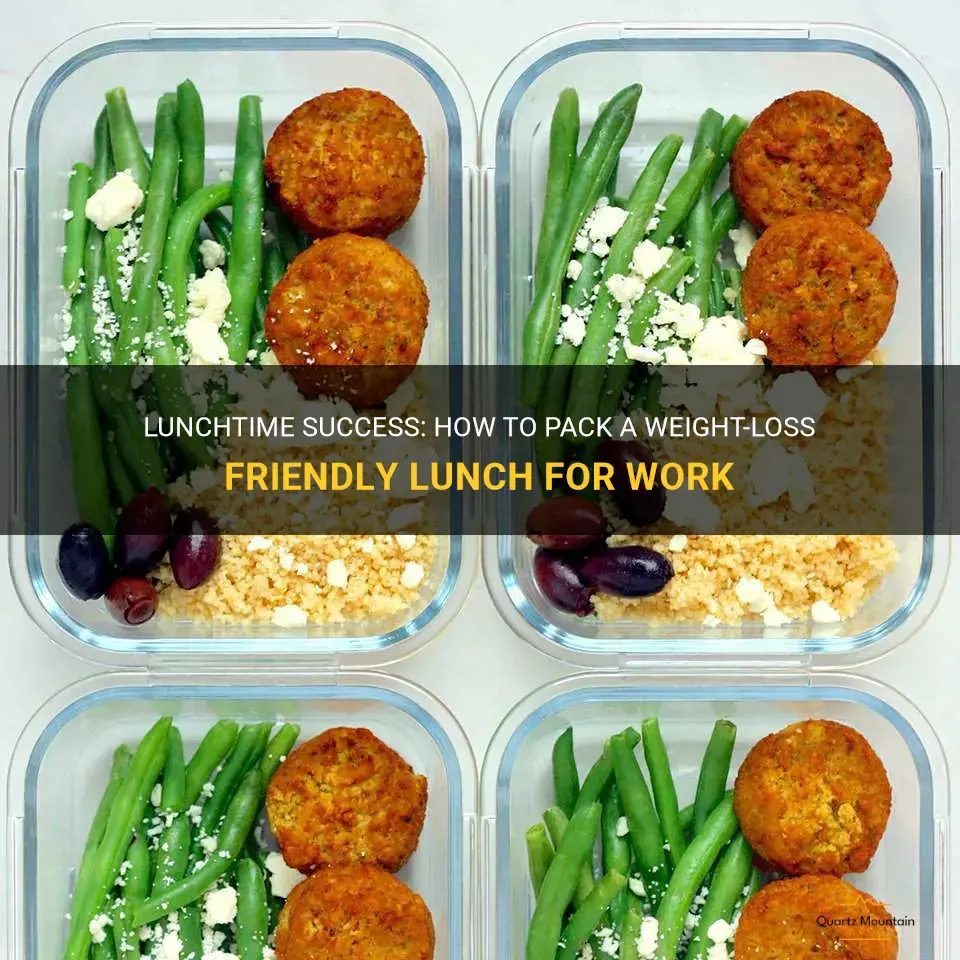
Are you tired of spending money on unhealthy and overpriced lunches at work? Do you struggle to stick to your weight-loss goals during the workweek? Look no further! In this guide, we will share tips and tricks for packing a weight-loss friendly lunch for work, ensuring that you stay on track and reach your health goals. From smart food choices to meal planning strategies, we've got you covered. Say goodbye to the midday slump and hello to lunchtime success!
What You'll Learn
- What are some healthy lunch options that will help me lose weight while at work?
- Are there any specific foods or ingredients that I should avoid packing in my lunch to help with weight loss?
- Can you provide some quick and easy lunch ideas that are low in calories but still filling?
- Is there a certain balance of macronutrients (carbohydrates, protein, and fat) that I should aim for when packing my lunch for weight loss?
- Are there any tips or strategies for meal prepping and packing lunches for weight loss at work?

What are some healthy lunch options that will help me lose weight while at work?
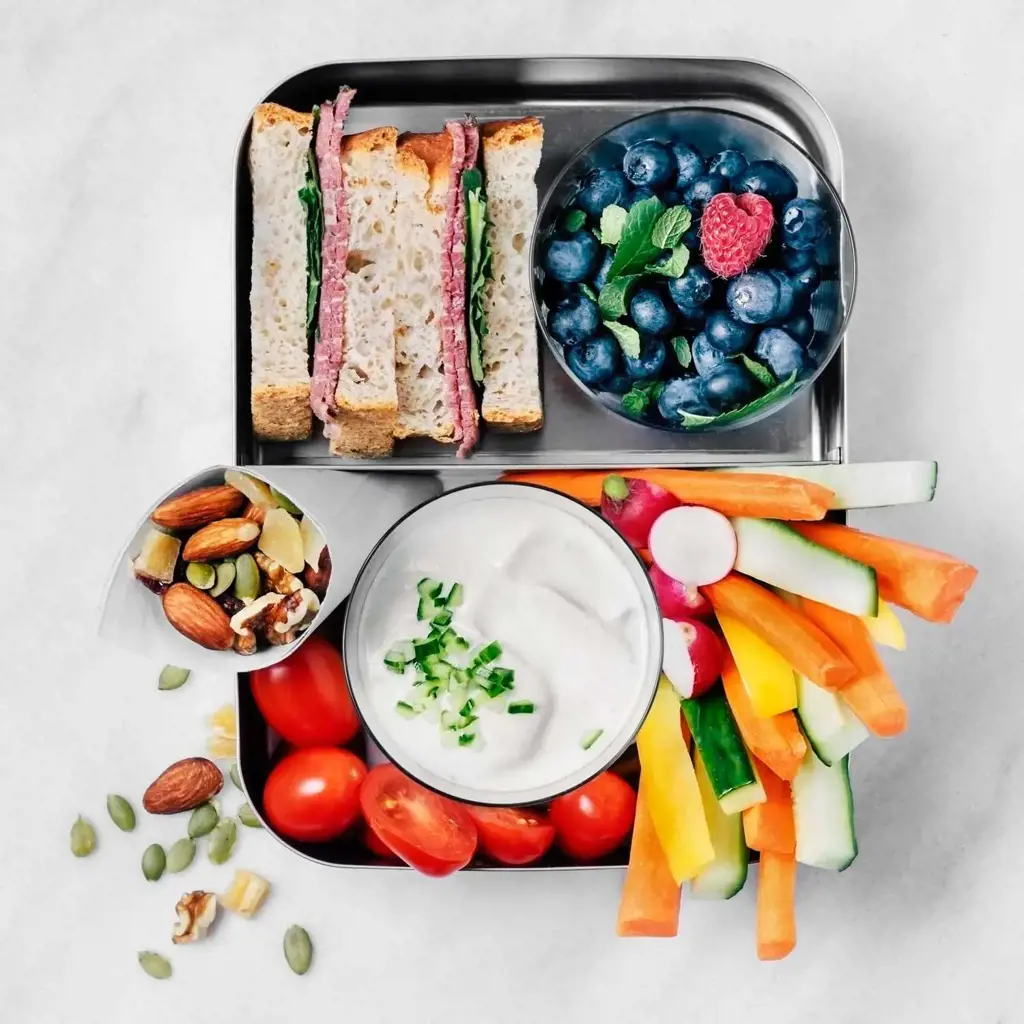
Losing weight often entails making healthier choices when it comes to what we eat. This includes finding options for meals that are both nutritious and satisfying. When it comes to lunch at work, it can be challenging to find healthy options that are convenient and easy to prepare. However, with a little planning and creativity, there are several delicious and healthy lunch choices that can help you shed those extra pounds.
One key factor in a healthy lunch is to incorporate a balance of macronutrients, including protein, carbohydrates, and healthy fats. Protein is essential for keeping you full and promoting muscle growth and repair. Carbohydrates provide energy, while healthy fats help keep you feeling satisfied.
Some healthy lunch options that can aid in weight loss include:
- Salad with lean protein: Start with a bed of mixed greens and load it up with colorful veggies like peppers, cucumbers, and tomatoes. Add a source of lean protein, such as grilled chicken, turkey, or tofu. Top it off with a sprinkle of nuts or seeds for some extra crunch and healthy fats. Dress the salad with a light vinaigrette or a squeeze of lemon juice.
- Wraps or lettuce wraps: Swap out the traditional sandwich bread for a whole-grain wrap or use a large lettuce leaf as a wrap. Fill it with a source of lean protein, like turkey breast or grilled fish, and load it up with veggies and a smear of hummus or avocado for some healthy fats.
- Quinoa or whole-grain bowls: Cook up a batch of quinoa or whole grains like brown rice or farro at home and portion it into containers for the week. At lunchtime, add a serving of cooked grains to a bowl and top it with grilled vegetables, a source of lean protein like grilled shrimp or beans, and a drizzle of olive oil or balsamic vinegar.
- Soup and salads: Combine a bowl of vegetable-based soup with a side salad for a filling and low-calorie lunch. Look for soups that are broth-based rather than cream-based and opt for heartier salads with a mix of vegetables, protein, and a light dressing.
- Stir-fries or stir-fry bowls: Prepare stir-fries with a variety of colorful vegetables, lean protein like chicken or tofu, and a flavorful sauce made from ingredients like soy sauce, ginger, and garlic. Serve it over a bed of brown rice or quinoa for a complete and satisfying meal.
When preparing your lunch, it's important to be mindful of portion sizes. Be sure to include appropriate portion sizes for your specific calorie needs. Additionally, drinking plenty of water throughout the workday can help keep you hydrated and curb cravings.
In conclusion, there are plenty of healthy lunch options that can aid in weight loss while at work. Incorporating a balance of macronutrients, opting for lean proteins, whole grains, and plenty of vegetables, can ensure that your lunch is nutritious and satisfying. With a little planning and preparation, you can enjoy a delicious and healthy lunch that supports your weight loss goals.
Essential Summer Camp Packing List for Teenage Girls: A Guide to Adventure and Fun
You may want to see also

Are there any specific foods or ingredients that I should avoid packing in my lunch to help with weight loss?
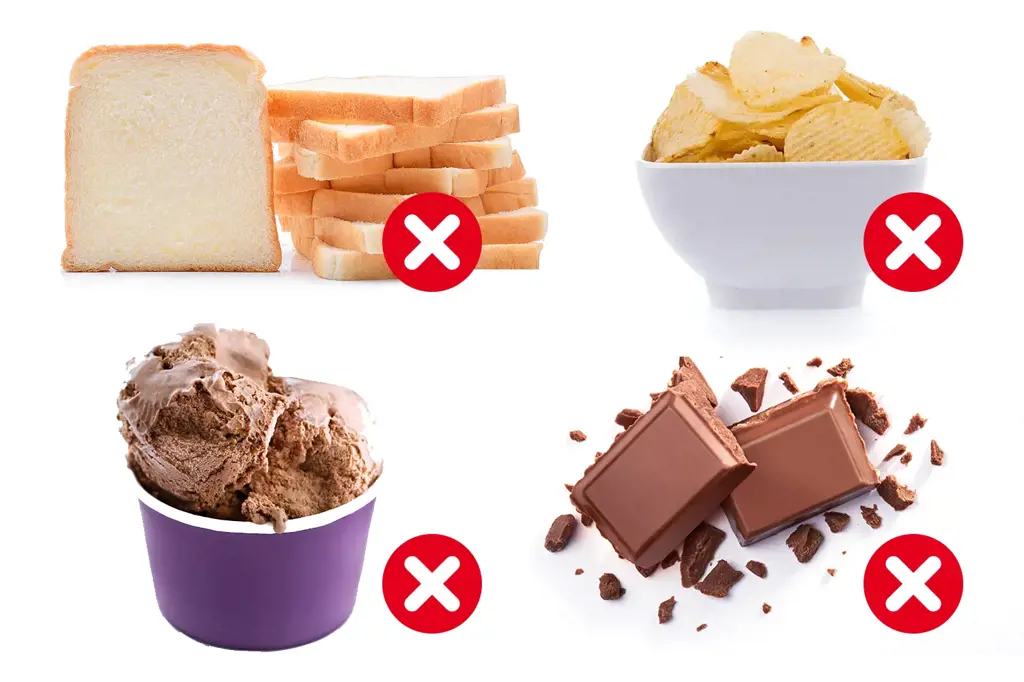
When it comes to weight loss, what you pack in your lunch can make a big difference. Certain foods and ingredients can derail your progress by being high in calories, fat, or sugar while providing little nutritional value. Avoiding these foods and ingredients can help you stay on track and reach your weight loss goals.
One food group to avoid or minimize in your packed lunches is processed foods. These include items such as pre-packaged snacks, frozen meals, and fast food options. Processed foods are typically high in calories, unhealthy fats, and added sugars. They often lack the essential nutrients your body needs, leading to feelings of hunger and fatigue.
Instead of relying on processed foods, opt for homemade meals and snacks made with fresh, whole ingredients. Include plenty of fruits, vegetables, lean proteins, and whole grains in your lunch. These foods provide essential vitamins, minerals, and fiber, which can help you feel full and satisfied while supporting your weight loss efforts.
Another ingredient to be mindful of is added sugars. Many processed foods, such as sugary drinks, cookies, and candy bars, are loaded with added sugars. These can quickly add up in calories without providing any lasting satiety. In addition, excess sugar consumption has been linked to weight gain and an increased risk of chronic diseases.
To avoid hidden sugars, read food labels carefully and look for items with low or no added sugar. Opt for homemade snacks, such as fresh fruit, yogurt, or nuts, which are naturally sweetened and provide added nutrients. If you do have a sweet tooth, try to satisfy your cravings with healthier alternatives, such as dark chocolate or fruit-based desserts.
In addition to processed foods and added sugars, it's essential to watch out for high-fat ingredients in your packed lunches. Foods that are fried, greasy, or made with heavy sauces or dressings can contribute to weight gain and poor overall health. These foods are often high in calories and unhealthy fats, which can lead to increased body fat and a higher risk of heart disease.
Instead of reaching for high-fat options, choose lighter alternatives for your lunches. For example, swap fried chicken for grilled chicken or replace creamy dressings with vinaigrettes or light sauces. These small changes can make a big difference in reducing your calorie intake while still providing flavorful and satisfying meals.
It's important to note that everyone's nutritional needs and weight loss goals are different. If you have specific dietary requirements or medical conditions, it may be helpful to consult a registered dietitian or healthcare professional for personalized advice. They can provide guidance on how to pack healthy and balanced lunches that align with your weight loss plan.
In conclusion, when packing your lunch for weight loss, it's best to avoid or minimize processed foods, added sugars, and high-fat ingredients. Instead, focus on packing meals and snacks made with fresh, whole ingredients that are nutrient-dense and satisfying. By making these small changes, you can support your weight loss efforts and improve your overall health.
The Ultimate Packing List for Your Trip to the Cayman Islands
You may want to see also

Can you provide some quick and easy lunch ideas that are low in calories but still filling?
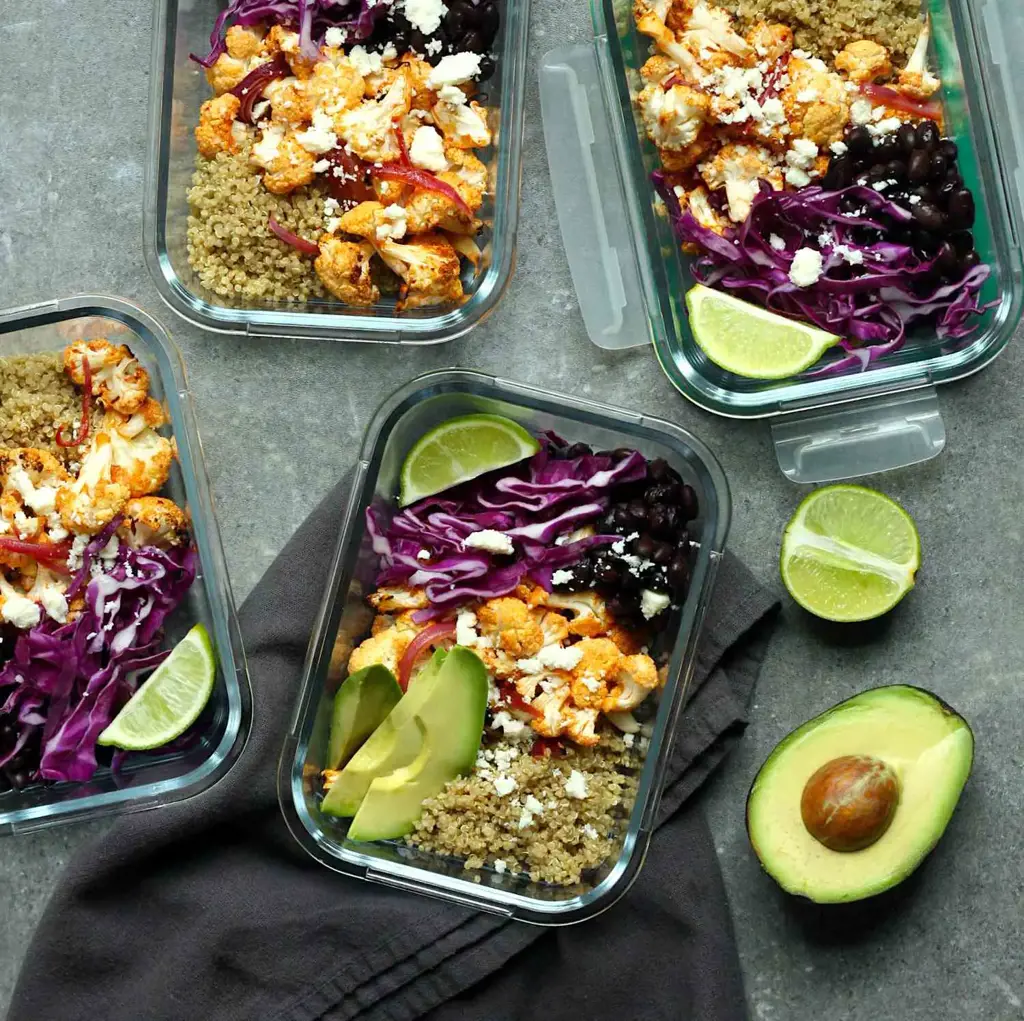
When it comes to choosing a quick and easy lunch that is low in calories but still filling, it's important to strike the right balance between nutritional value and satiety. The following are some top lunch ideas that fit the bill.
- Salad with lean protein: A salad is a classic lunch option that can be made both nutritious and filling. Start with a base of mixed greens or spinach and add a variety of colorful vegetables like cherry tomatoes, cucumbers, and bell peppers. Top it off with a lean protein source like grilled chicken, tofu, or boiled eggs. Boost the flavor with a homemade dressing made with olive oil, lemon juice, and herbs.
- Vegetable stir-fry: Stir-fries are not only quick and easy to make but also a great way to pack a variety of vegetables into your meal. Saute a mixture of colorful veggies like broccoli, bell peppers, carrots, and snap peas in a small amount of olive oil. Add garlic, ginger, and low-sodium soy sauce for flavor. Serve over a bed of brown rice or quinoa for added fiber and satiety.
- Wrap with lean protein: Wraps are an excellent choice for a quick and portable lunch. Use whole wheat or multigrain wraps and fill them with lean protein sources like grilled chicken, turkey, or fish. Add plenty of vegetables like lettuce, tomatoes, cucumbers, and avocado for extra fiber and nutrients. You can also opt for a vegetarian wrap option by using hummus or tofu as the protein source.
- Lentil soup: Soups are a great option for a filling and low-calorie lunch. Lentil soup is packed with plant-based protein, fiber, and a variety of vitamins and minerals. Make a batch ahead of time and portion it into single-serving containers for a quick and easy lunch option. You can also add vegetables like carrots, celery, and tomatoes to make it even more nutritious and filling.
- Greek yogurt with fruit and nuts: Greek yogurt is a protein-rich option that can be enjoyed on its own or packed with toppings for added flavor and texture. Top a cup of plain Greek yogurt with fresh berries, sliced almonds, and a drizzle of honey for a satisfying and nutritious lunch. This option is not only low in calories but also provides a good balance of carbohydrates, protein, and healthy fats.
In summary, there are plenty of quick and easy lunch ideas that are low in calories but still filling. Salads, stir-fries, wraps, soups, and Greek yogurt with fruit and nuts are all great options that provide a good balance of nutrients and satiety. Experiment with these ideas and customize them with your favorite ingredients for a delicious and satisfying lunch.
Covering Options for Packing an Incision
You may want to see also

Is there a certain balance of macronutrients (carbohydrates, protein, and fat) that I should aim for when packing my lunch for weight loss?
-that-i-should-aim-for-when-packing-my-lunch-for-weight-loss_20240115212944.webp)
When it comes to weight loss, the macronutrient composition of your lunch can play a crucial role in helping you achieve your goals. A certain balance of carbohydrates, protein, and fat can help regulate your appetite, control blood sugar levels, and promote fat burning. Let's take a closer look at the ideal macronutrient ratio for weight loss and how you can incorporate it into your packed lunches.
Carbohydrates are a primary source of energy for your body, but not all carbs are created equal. Simple carbohydrates, such as refined grains and sugars, can cause spikes in blood sugar levels and lead to cravings and energy crashes. On the other hand, complex carbohydrates, like whole grains, vegetables, and legumes, provide a steady release of energy, keep you full for longer, and promote stable blood sugar levels.
To optimize weight loss, aim to include complex carbohydrates in your packed lunch. This can be done by choosing whole wheat bread or wraps for sandwiches, opting for brown rice or quinoa in salads or stir-fries, and packing a variety of colorful vegetables to add volume and nutrients to your meals. These complex carbs will provide sustained energy and satiety, preventing overeating and keeping your hunger at bay.
Protein is an essential macronutrient for weight loss as it helps build and repair tissues, preserves muscle mass, and provides a greater feeling of fullness compared to carbohydrates and fat. Including a good amount of protein in your packed lunch can help control appetite and regulate your overall calorie intake.
Some excellent protein sources for weight loss include lean meats like chicken and turkey, fish, eggs, tofu, Greek yogurt, and legumes. Incorporate these into your packed lunch by adding grilled chicken to salads, packing tuna or salmon sandwiches, including hard-boiled eggs as a snack, or including a side of Greek yogurt with fruit for dessert. Aim to have a serving of protein with each meal to ensure that you're getting enough throughout the day.
While fat has more calories per gram compared to carbohydrates and protein, it plays a crucial role in weight loss by providing satiety and helping your body absorb certain vitamins and minerals. Including healthy fats in your packed lunch can help keep you full and satisfied until your next meal.
Some healthy fats to consider incorporating into your lunch include avocados, nuts and seeds, olive oil, and fatty fish like salmon or sardines. Add avocado slices to sandwiches or salads, sprinkle nuts or seeds on top of salads or yogurt, and use olive oil as a dressing or for sautéing vegetables. These sources of healthy fats will add flavor and texture to your meals while providing beneficial nutrients.
To find the right balance of macronutrients for weight loss, aim for a plate that consists of approximately 40% carbohydrates, 30% protein, and 30% fat. This ratio can help promote fat burning, maintain muscle mass, and keep you satisfied throughout the day. However, it's important to note that individual needs may vary, so it's always a good idea to consult with a registered dietitian or nutritionist for personalized advice.
Incorporating this macronutrient balance into your packed lunches can be achieved by following a few simple steps. First, plan your meals in advance to ensure you have a variety of complex carbohydrates, protein, and healthy fats on hand. Create a grocery list and stick to it when shopping for ingredients. Next, batch cook your proteins, such as grilled chicken or hard-boiled eggs, so they are ready to go for the week. Finally, when assembling your lunches, aim for a mix of vegetables, complex carbs, protein, and healthy fats to create a balanced and satisfying meal.
For example, you could pack a whole wheat turkey wrap with plenty of colorful vegetables, a side of Greek yogurt with berries, and a small handful of almonds for added crunch and healthy fats. This lunch provides a good balance of macronutrients, is easy to pack and eat on the go, and keeps you energized and satisfied until your afternoon snack or dinner.
In conclusion, when packing your lunch for weight loss, it's important to aim for a certain balance of macronutrients. Including complex carbohydrates, lean protein, and healthy fats can help regulate appetite, control blood sugar levels, and promote fat burning. By planning your meals in advance, incorporating a variety of nutrient-dense foods, and following a balanced macronutrient ratio, you can create packed lunches that support your weight loss goals. Remember to consult with a healthcare professional or registered dietitian for personalized advice based on your unique needs and goals.
Essential Items to Pack for Hiking in Sedona
You may want to see also

Are there any tips or strategies for meal prepping and packing lunches for weight loss at work?
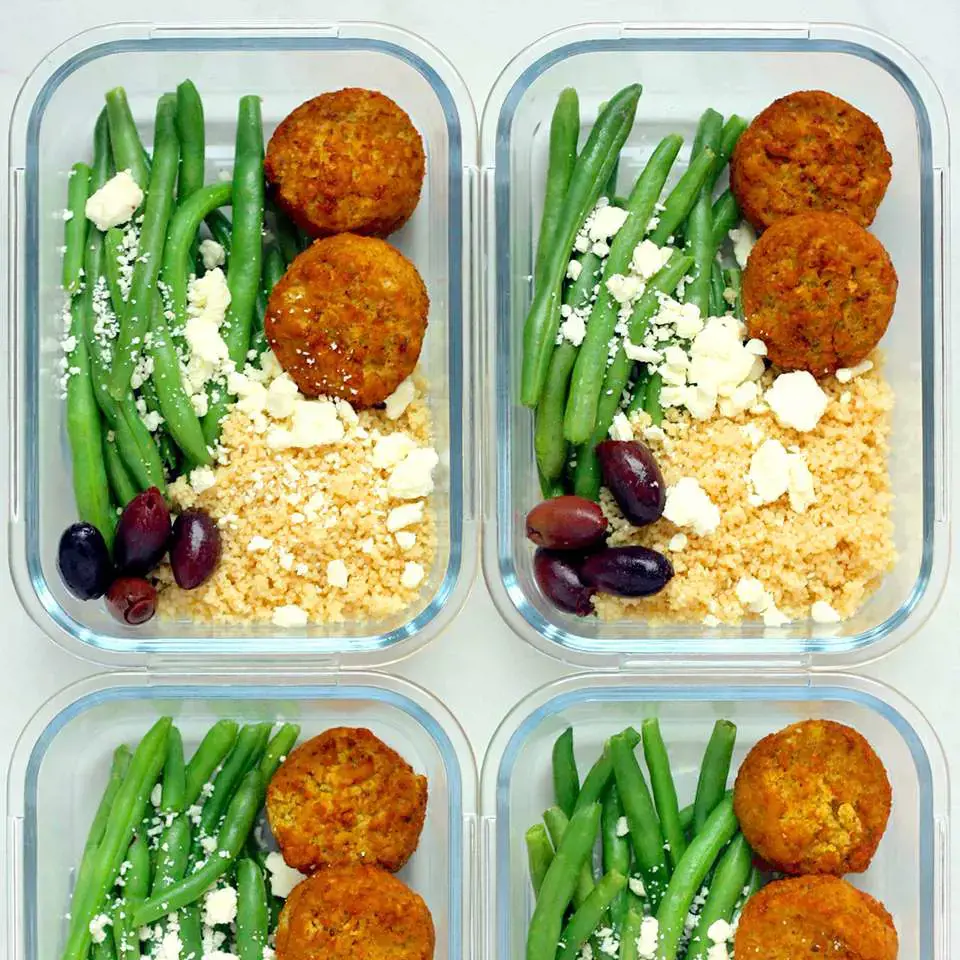
Meal prepping and packing lunches for weight loss at work can be a great strategy to stay on track with your health goals and save time and money. By planning your meals and snacks in advance, you can ensure that you have healthy options available and avoid making impulsive food choices. Here are some tips and strategies to help you succeed at meal prepping and packing lunches for weight loss at work:
- Set specific goals: Before you start meal prepping, it's important to determine your specific weight loss goals. This will help you choose the right portion sizes and ingredients for your meals. Make sure your goals are realistic and achievable, and consult with a dietitian or nutritionist if needed.
- Plan your meals: Start by creating a weekly meal plan that includes breakfast, lunch, dinner, and snacks. Choose a variety of nutrient-dense foods that will keep you satisfied and energized throughout the day. Consider your dietary preferences, food allergies, and any dietary restrictions when planning your meals.
- Choose the right containers: Invest in a set of high-quality food containers that are leak-proof and can keep your meals fresh. Glass containers are a popular choice as they are microwave-safe, easy to clean, and don't absorb odors. Opt for containers with dividers to keep different foods separate.
- Cook in batches: Dedicate a specific day or time each week to cook in bulk. Prepare larger portions of proteins, whole grains, and vegetables that can be divided into individual servings. This will save you time during the week and make it easier to assemble your meals.
- Portion control: Use a food scale or measuring cups to ensure that you are portioning your meals correctly. This is especially important if you are tracking your calorie intake for weight loss. Aim to fill half of your plate with non-starchy vegetables, one-quarter with lean protein, and one-quarter with whole grains or starchy vegetables.
- Pack a variety of foods: To prevent boredom, include a variety of flavors, textures, and colors in your packed lunches. Incorporate different fruits, vegetables, proteins, and grains each day to keep your taste buds satisfied. Experiment with different herbs and spices to enhance the flavors of your meals.
- Include healthy snacks: Pack a few healthy snacks to keep you fueled throughout the day. Choose options such as raw nuts, Greek yogurt, carrots and hummus, or sliced fruits. These snacks will help curb your hunger and prevent you from reaching for unhealthy options.
- Stay hydrated: Don't forget to pack a water bottle and stay hydrated throughout the day. Drinking enough water is important for weight loss and overall health. If you prefer flavored drinks, try infusing your water with fruits or herbs for a refreshing twist.
- Stay organized: Label your meals and snacks with the date of preparation to ensure you are consuming them within their freshness timeframe. Keep a list or a spreadsheet of the meals you have prepared to help you stay organized and avoid waste.
- Enjoy your meals: Finally, take the time to savor and enjoy your meals. Avoid eating at your desk or in front of a screen, as this can lead to mindless eating. Find a quiet place to eat where you can focus on your food and savor every bite.
Meal prepping and packing lunches for weight loss at work requires some planning and effort, but the benefits are worth it. By following these tips and strategies, you can stay on track with your weight loss goals, save money, and ensure that you have nutritious meals readily available. Remember to listen to your body's hunger and fullness cues and make adjustments to your meal plan as needed.
Essential Packing Tips for a Trip to Juicy Oasis: What to Pack
You may want to see also
Frequently asked questions
When it comes to packing a lunch for work to lose weight, it's important to focus on incorporating plenty of fresh fruits, vegetables, lean proteins, and whole grains. Some healthy lunch options include salads with grilled chicken or fish, whole wheat wraps with vegetables and lean protein, brown rice bowls with steamed vegetables and tofu, or homemade vegetable soups.
Meal prepping is a great way to ensure you have healthy lunch options ready to go for the workweek. You can begin by planning your meals in advance, making a shopping list, and batch cooking on the weekends. Cook large servings of lean proteins (such as grilled chicken, turkey, or fish), chop up a variety of vegetables for salads or stir-fries, and portion out servings of whole grains (like brown rice or quinoa). This way, you can easily assemble balanced meals throughout the week.
Packing healthy snacks is essential to stay on track with weight loss goals. Opt for snacks that are high in protein and fiber, which will help keep you satisfied between meals. Some examples of healthy snacks include Greek yogurt with berries, baby carrots with hummus, apple slices with almond butter, mixed nuts and seeds, or hard-boiled eggs.
Just because you're trying to lose weight doesn't mean your work lunches have to be boring. Experiment with different flavors and spices to make your meals more exciting. Consider adding fresh herbs, garlic, ginger, or various types of vinegar to your salads or marinades. You can also try new recipes or meal ideas to keep things interesting, such as bento box-style lunches with a variety of colorful and flavorful ingredients.
Portion control is crucial when it comes to weight loss, even when packing lunches for work. One tip is to use smaller containers or dividers to portion out your meals. Another tip is to fill half of your plate or container with vegetables or salad, and the other half with lean protein and whole grains. This helps ensure that you're getting a balanced meal without overindulging in unhealthy portions. It may also be helpful to bring your own set of measuring cups or a food scale to accurately measure portion sizes if needed.







